May 6 - 12, 2012: Issue 57
Walter Oswald Watt
11 February, 1878 – 21 May, 1921
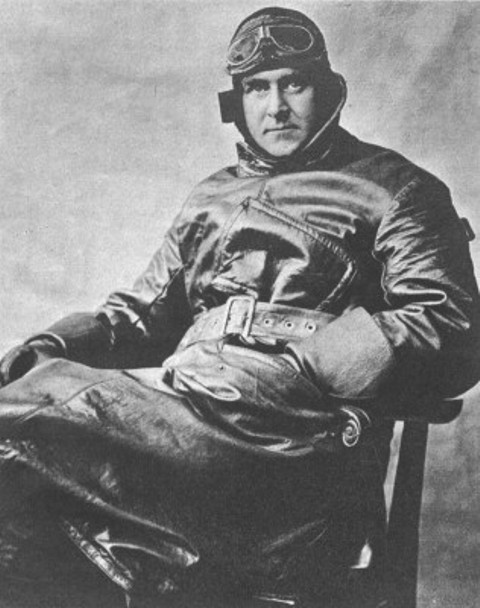 Captain Walter Oswald Watt, who, according to our cables, has been decorated, was as an aviation officer in the Australian forces, mentioned in the French army orders with the following note:
Captain Walter Oswald Watt, who, according to our cables, has been decorated, was as an aviation officer in the Australian forces, mentioned in the French army orders with the following note:
— 'A fine officer. A pilot of great daring and imperturbable coolness. Never hesitates to fly above the enemy's lines at a low altitude whenever circumstances require it. Has made numerous most dangerous reconnaissance, and his machine has frequently been struck by shell-splinters. Although wounded in the head on August 8 he continued his reconnaissance with the greatest coolness.' PERSONAL. (1915, December 17). The North Western Advocate and the Emu Bay Times (Tas.: 1899 - 1919), p. 3. Retrieved from http://nla.gov.au/nla.news-article64623760
Walter Oswald Watt was the youngest son of John Brown Watt, a Scot who had migrated to New South Wales in 1842 and Australian-born mother, Mary Jane (nee Holden, daughter of George Kenyon Holden and Eliza Punette Clunes, née Mackenzie). He was one of five sons and five daughters. Watt’s mother died when he was one and shortly afterwards the family relocated to Sydney. His father became a successful merchant, shipping company owner and politician, frequently representing his state on overseas missions.
At the age of 11, ‘Toby’ as he was nicknamed, was sent to be educated in England at Clifton College, Bristol, and Trinity College, Cambridge where he obtained his Bachelor and Master of Arts degrees.
He returned to Sydney in 1900 and became Second Lieutenant in the New South Wales Scottish Rifles. 1901 saw him became a landowner, purchasing Howlong station at Carrathool. He also had interests in Llanillo, Goonal and Gunningrah, New South Wales, as well as in Queensland cattle-stations, Strathmore at Bowen and Glen Prairie at Rockhampton.
In 1902 he was appointed Aide-de-camp to then Governor of New South Wales Admiral Sir Harry Rawson GCB GCMG RN.
On September 27, 1902 he married Muriel Maud Williams, daughter of Toorak (Melbourne) Sir Hartley Williams, a prominent lawyer and later a judge.
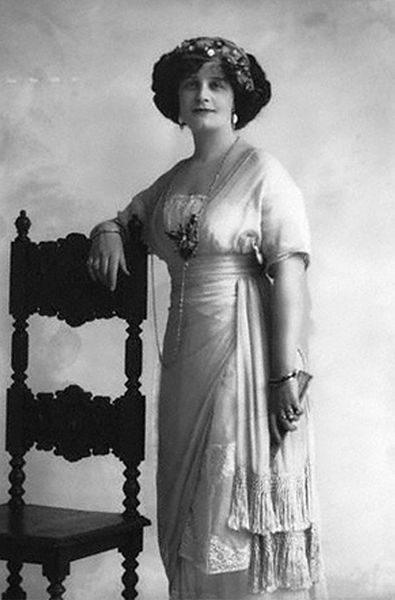
Above: Mrs Muriel Watt
By 1904 he headed back to England and obtained his Master of Arts degree from Cambridge in 1904. In October the following year he was promoted to captain in the Scottish Rifles. On a subsequent trip to England he took flying lessons at the Bristol aviation school on Salisbury Plain. Watt attained his Royal Aero Club certificate, no. 112, on 1 August 1911, becoming the first Australian citizen so qualified.
AUSTRALIAN PILOT Captain Walter Oswald Watt, of the New South Wales Scottish Rifles, has been awarded a pilot's certificate for proficiency in aviation. AUSTRALIAN PILOT. (1911, August 3). The Argus (Melbourne, Vic. : 1848 - 1956), p. 8. Retrieved from http://nla.gov.au/nla.news-article11604771
Mr Watts continued his passion for planes, setting up as a civilian flyer in Australia on his return in November 1911 and publicly declaring that the time was "rapidly approaching when an aero corps [would] have to be inaugurated" as part of the country's "military defence scheme". He also recommended manufacturing foreign-designed aircraft under licence in Australia, which did occur here after the second world war.
In April 1912 he purchased a property at Bilgola, subsequently named ‘Bilgola Cottage’ but named then, possibly due to simple typo, ‘Balgowlah’ from Henry Leddon Jones. Here he liked living simply, enjoying the beach, fishing, swimming and entertaining guests who remarked on the contrast of the bare essentials kept in this cottage compared to the opulent ‘society lifestyle’ he lived elsewhere.
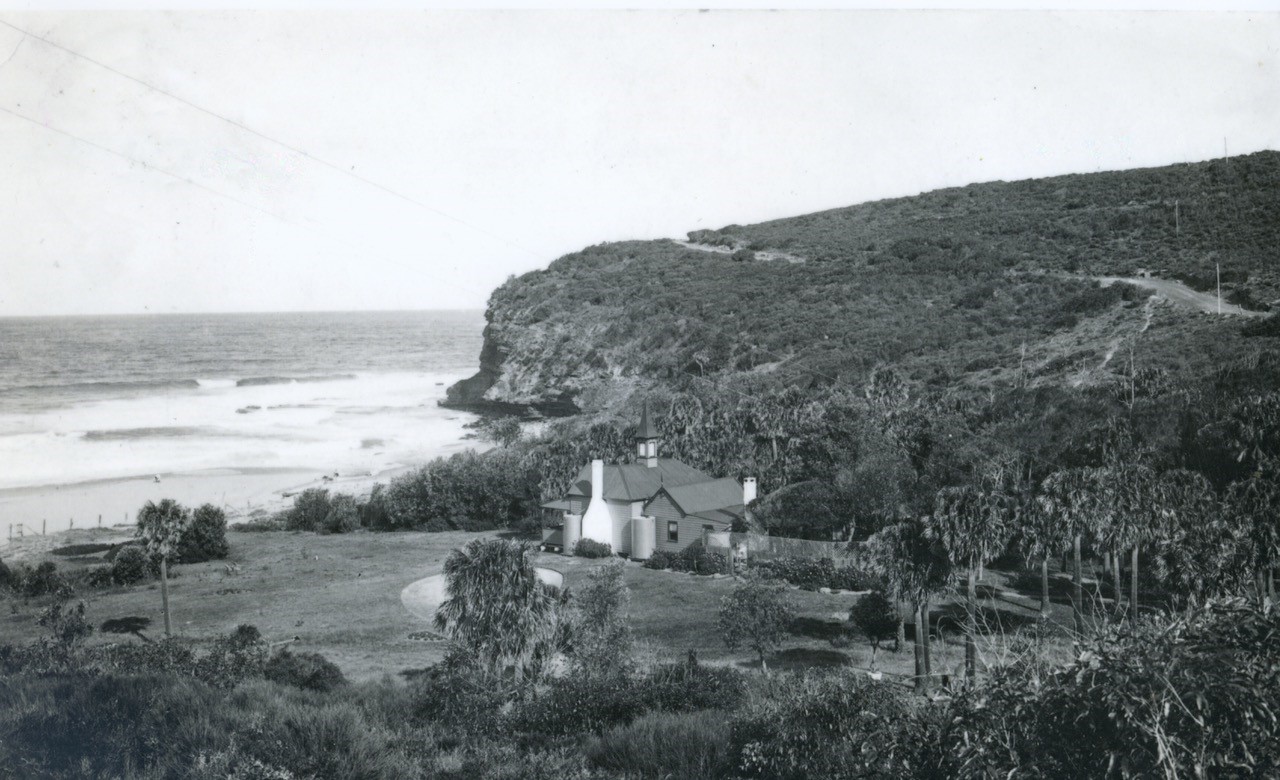
Bilgola House pic postmarked 17 November 1914. Photo: ABHS
Allen, Allen and Hemsley had a long association with being solicitors in Sydney, and Australia for that matter, and one of their sons, and a frequent visitor to Bilgola, and Pittwater for that matter, was Arthur Wigram Allen. The Allen Family albums, largely photographed by this gentleman, and digitised by the State Library of New South Wales, hold a record of Pittwater places from Rocky Point, Church Point, Bayview, to Mona Vale, Newport, Careel Bay and Palm Beach dating from 1909. There are also several Manly, Long Reef and Narrabeen photographs among this collection.
Their frequent visits to Bilgola were not an accident - they were attendees at his funeral and clearly had a long friendship with Col. Watts, stretching over years. Arthur Wigram Allen's son, Arthur Denis Wigram Allen(1894-1967), was an aviator too, who served in France in 1916 and so would have known Watt.
A small insight:
Sunday, 8th September, 1907; Jack and I motored to Oswald Watts' at Wivenhoe near Camden (41 miles), Mrs Wilson and Mrs Rhoda Anderson came with us. We had a very nice day getting back at 6 p.m.
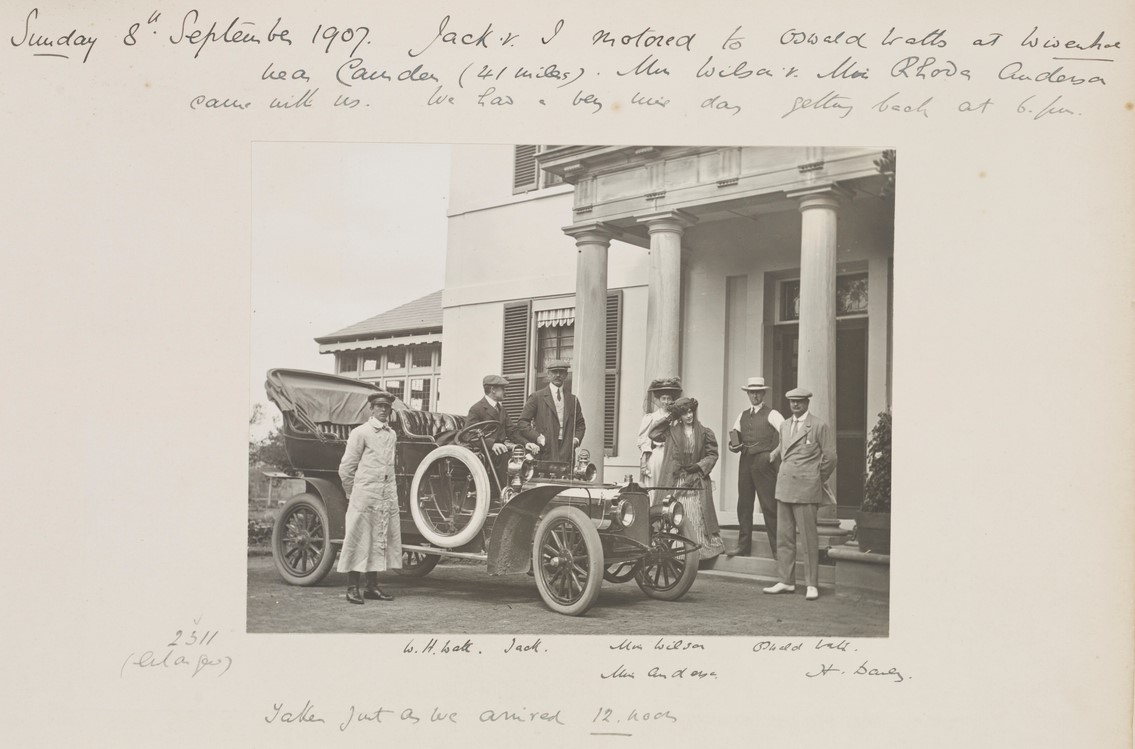
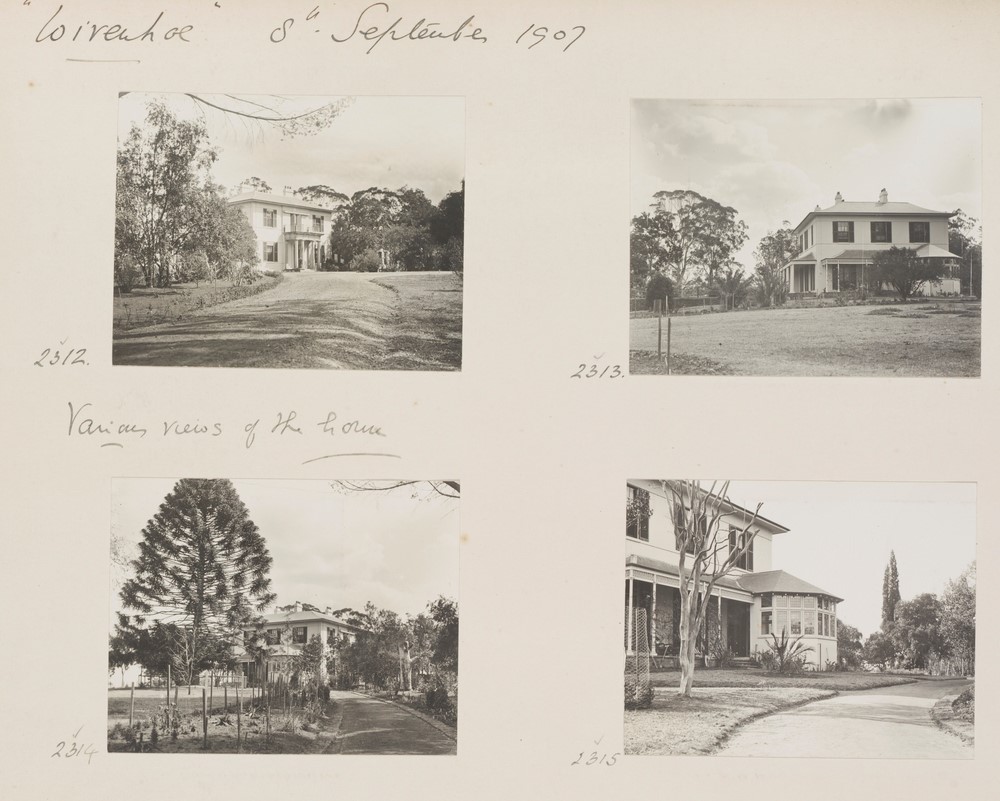
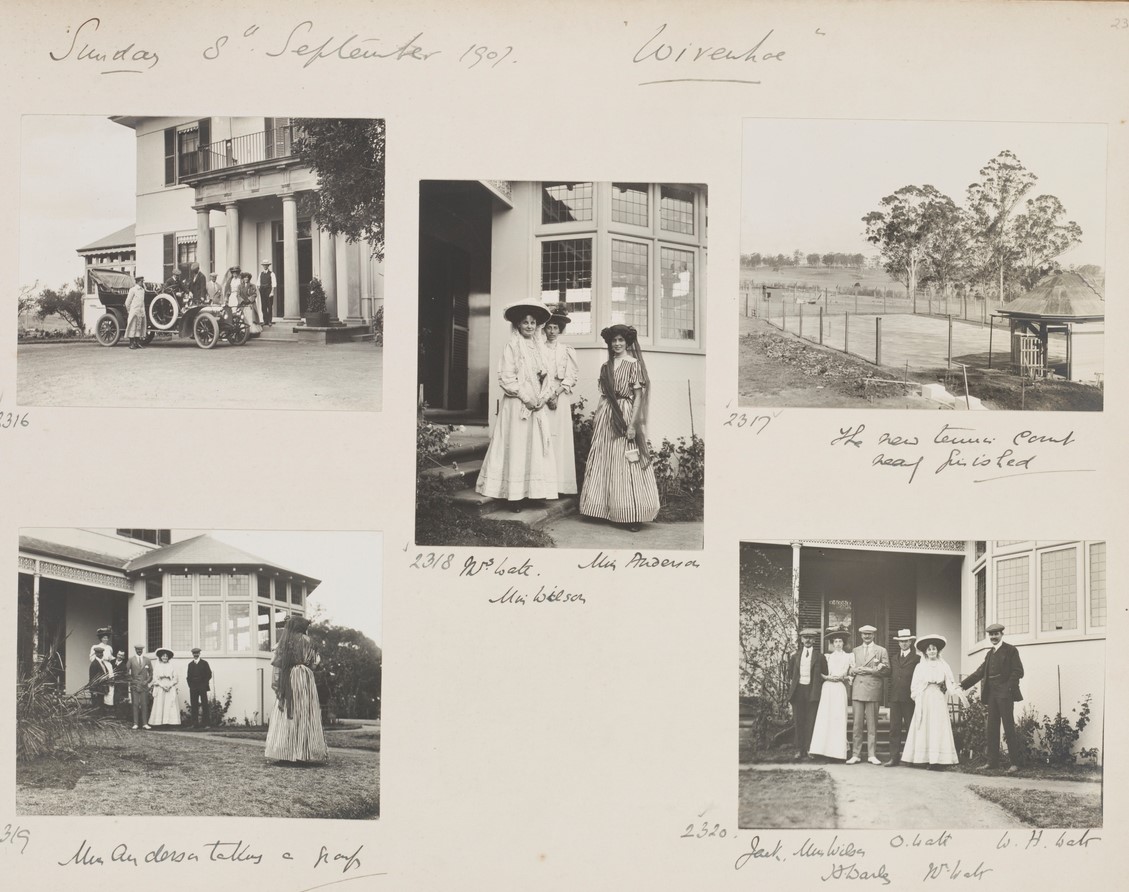
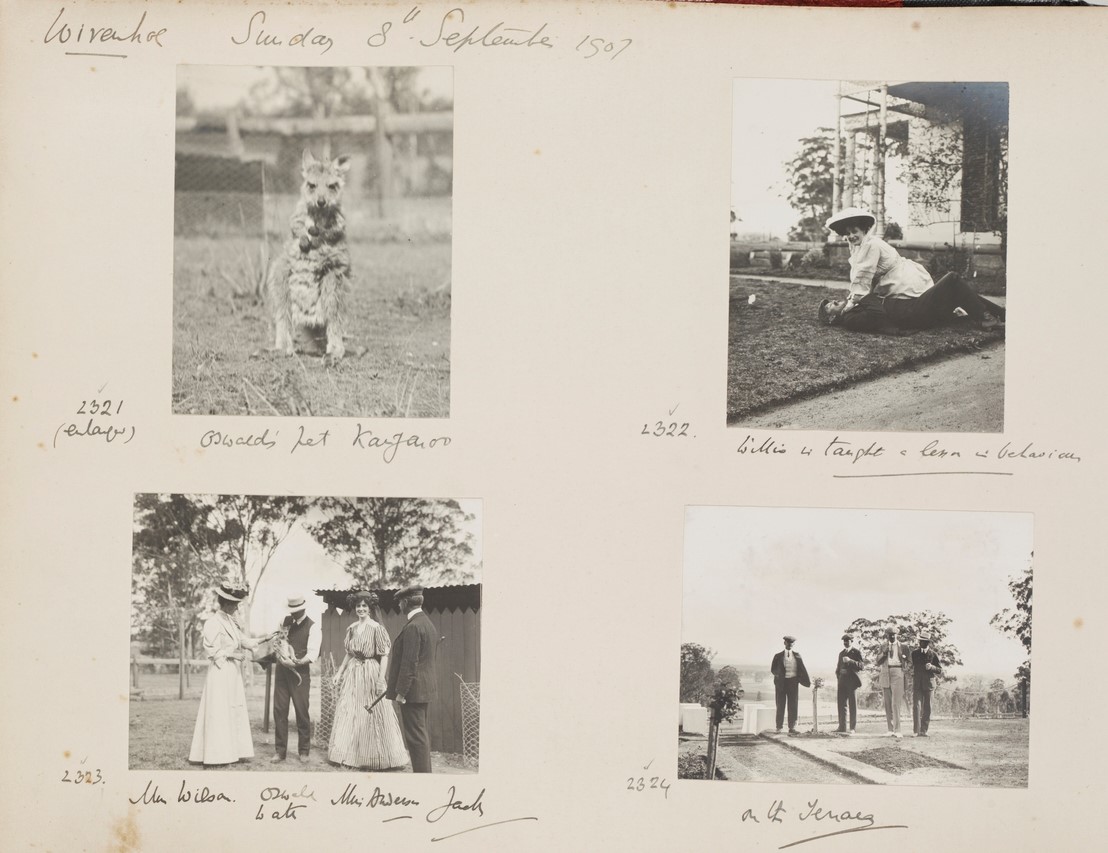
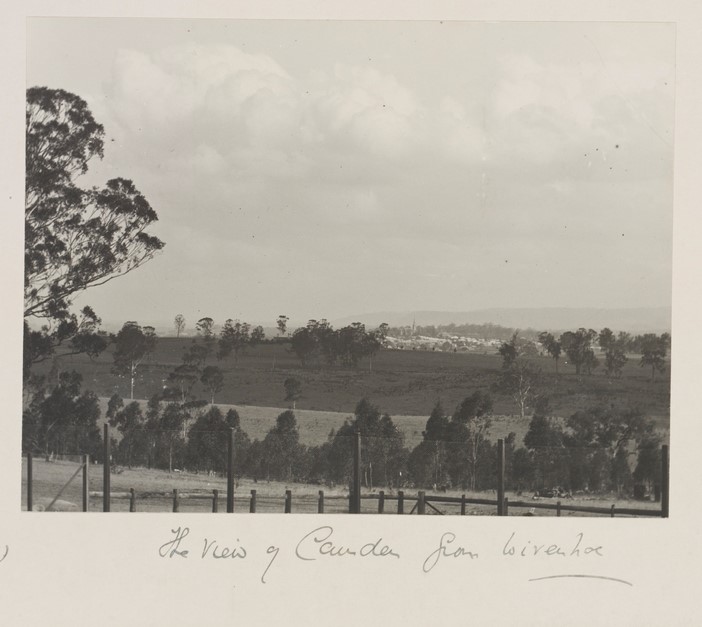
Wivenhoe - various views of the house. Items: a2883025h to a2883029h. All from Album 40: Photographs of the Allen family, 6 July 1907 - November 1907, Mitchell Library, State Library of New South Wales
Walter was clearly a man who worked hard and played hard and liked life in the raw. An alleged affair that began in 1911(December!) with a then 19 year old much admired dancer Ivy Schilling, was continued here and led the end of his marriage.
THE WATT DIVORCE CASE.
MISS IVY SCHILLING AND THE RESPONDENT.
Sydney, June 28. The Watt divorce suit was again before Mr. Justice Gordon to-day. The case was one in which Muriel Maud Watt, formerly Williams, petitioned for the dissolution of her marriage with Walter Oswald Watt on the ground of the misconduct of the respondent. The petition set out that the petitioner was married on September 27, 1902, to Walter Oswald Watt, the respondent, at Toorak, Melbourne, according to the rites of the Church of England; that the petitioner was born at Kenly, Toorak, Victoria; that her husband had been guilty of misconduct with some woman or women unknown to the petitioner at Sydney and Melbourne; and that her husband had been guilty of misconduct with Ivy Schilling at Sydney between December 18, 1911, and July 1, 1912. The petitioner asked for the dissolution of the marriage and the custody of the child, James Oswald, issue of the marriage. When the case was called on Mr. Whitfeld said he proposed to call as a witness Henry Leddon Jones.
His Honor-I suppose the other side is aware that this evidence is being given?
Mr. Whitfeld-Yes, Mr. Milner Stephen was informed yesterday.
Henry Leddon Jones said he lived in Palm Grove, on the Barrenjoey road, near Newport. He met with an accident and could not attend the court. The witness said he formerly owned Balgowlah, and the respondent purchased it from him in April last year. The witness lived there formerly, and used to let portion of the cottage to fishing parties. One Friday night Watt and Miss Schilling arrived after mid-night and roused the witness. They were there one night, and the rest of the party arrived on the Saturday. There were eight rooms and they all had single beds. Next morning be passed Watt's room. The door was open, and he was in bed. The lady occupied the room opposite. He never saw any impropriety. His Honor said be would deliver judgment to-morrow. THE WATT DIVORCE CASE. (1913, June 27). The Advertiser(Adelaide, SA : 1889 - 1931), p. 10. Retrieved from http://nla.gov.au/nla.news-article5417553
WATT DIVORCE SUIT.
VISIT TO WEEK-END COTTAGE.
Mr. Justice Gordon, in the Sydney Divorce Court, on June-26, beard the conclusion of the evidence in a case in winch Muriel Maud Watt, formerly Williams, petitioned for the dissolution of her marriage with Walter Oswald Watt, on the ground of alleged misconduct.
The Court was asked by petitioner to find whether, her husband had been guilty with some woman or women unknown to petitioner at Sydney and Melbourne; and whether her husband had been guilty with a woman known as Ivy Schilling at Sydney, between December 18. 1911, and July 1, 1912, '
Henry Leddon Jones said that he lived at 'Palm Grove," on the Barrenjoey-road, near Newport. He formerly owned "Balgowlah," and the respondent purchased it from him in April last year. Witness lived there formerly, and used to let portion of the cottage to fishing parties.
Mr. Whitfield (for petitioner).-Did you ever see Mr. Watt there?
Witness.-Yes....WATT DIVORCE SUIT. (1913, July 5). The Australasian (Melbourne, Vic. : 1864 - 1946), p. 34. from http://nla.gov.au/nla.news-article143294016
Of Ivy: 'her most widely reported exploit outside the theatre occurred in 1911, when she saved a well-known surfer, Tommy Walker, from drowning at Manly Beach..' (From: pandora.nla.gov.au/pan/131760/20120120-0944/www.nla.gov.au/story-3.pdf)
Ivy went to England to pursue her career in 1914, not remarrying until 1932 (a Harvey Street surgeon).
'Toby' left Australia and went to Egypt, spending several months, where he purchased and practised flying a Blériot XI monoplane. While there he met leading French aviators including Louis Blériot and Roland Garros. Thinking that Britain would not be involved in a European war, he offered his services and his plane to the French and became an ordinary soldier in the Aviation Militaire section of the French Foreign Legion. He was awarded the Légion d'honneur and the Croix de Guerre, and given the brevet rank of captain.
SYDNEY AIRMAN HONOURED

CAPTAIN OSWALD WATT, WHO HAS BEEN PERSONALLY DECORATED BY GENERAL JOFFRE WITH THE LEGION OF HONOUR
Captain Oswald Watt, of Sydney, - a son of the late Mr. J.. B. Watt, M.L.C., and a nephew of Mr. , Walter C. Watt, director of the firm of Messrs. Gilchrist, Watt, and Sanderson. He went home to England about two years ago and studied aviation, afterwards returning to Australia. When the war broke out he proceeded to France and Joined the French flying corps.
The "Echo de Paris" recently published the following account of an adventure by Captain Watt:
"On Sunday afternoon one of our aeroplanes, piloted by Captain Watt, who had Captain Chapltrel as his observer, came to grief near B--, when at an altitude of 1800 metres, and at a distance of five or six kilometers from our trenches. Thanks to the coolness of the aviators they succeeded in landing without further ado, between the French and German trenches; but, as these trenches were not more than 100 metres apart, they were forced to submit to a pitiless hall of bullet:)and shells. The aeroplane was dcstroyed, but the two aviators found shelter behind a hayrick, and In this perilous situation they awaited the cessation of the enemy's fire. In course of time the hayrick caught fire, and thanks to the cover which the smoke gave them they were able to find their way back to our' lines." SYDNEY AIRMAN HONOURED. (1915, February 20). The Sydney Morning Herald (NSW : 1842 - 1954), p. 11. Retrieved from http://nla.gov.au/nla.news-article15561061
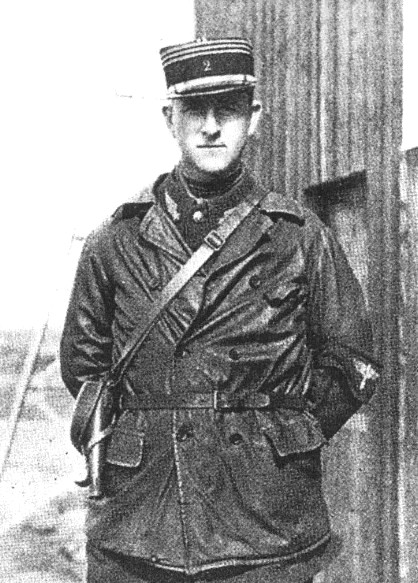
Above: 1914-15, in his French uniform
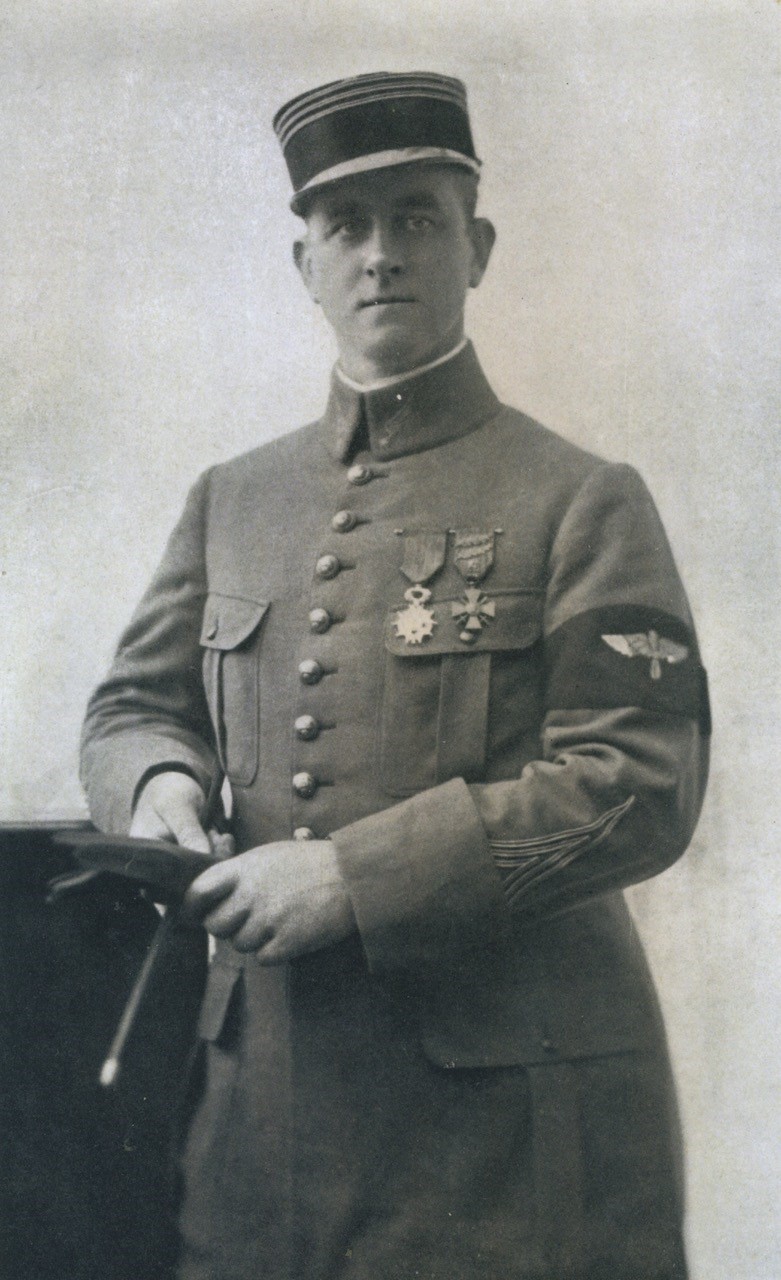
Oswald in 1915 wearing his French foreign legion pilot’s uniform with the Legion d’Honneur medal and the Croix de Guerre (cross of war) plus palms. Photo: ABHS
Although considered by some sources an avid Francophile Watt always proclaimed his antipodean connection while serving France, painting a kangaroo on the nose of his plane, which he named Advance Australia. Considered a no-nonsense type, he once introduced himself to a British pilot with the words "I am an Australian and I haven't got any manners".
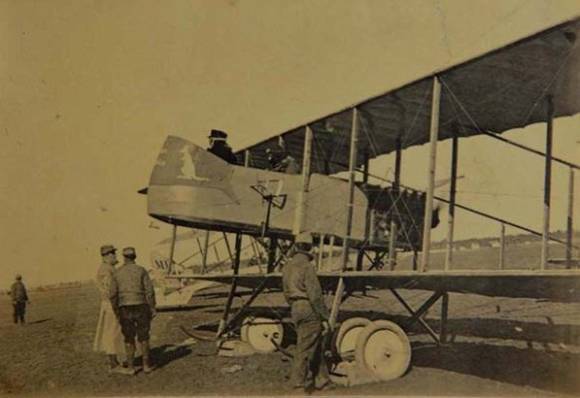
Above: Watt's Farman biplane "Advance Australia", c.1915, In Walter Oswald "Toby" Watt photographs, 1914-1915. Coll. No. 2008.045. Repository: McFarlin Library, Department of Special Collections and University Archives, University of Tulsa. 2933 E. 6th St. Tulsa, Oklahoma 74104-3123
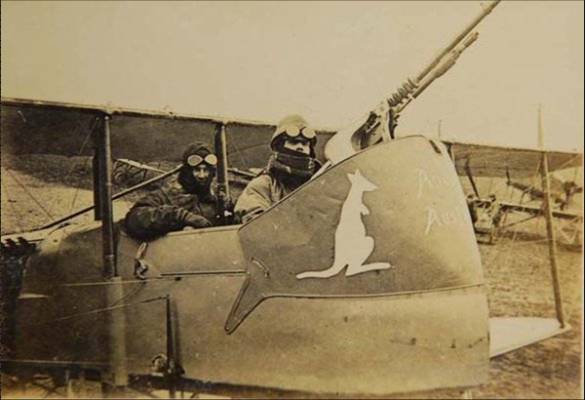
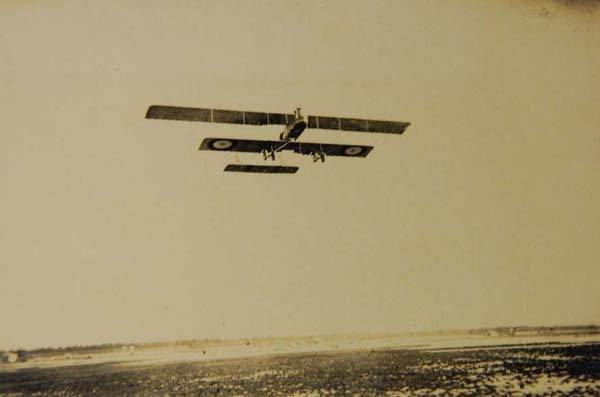
Above: Same plane flying
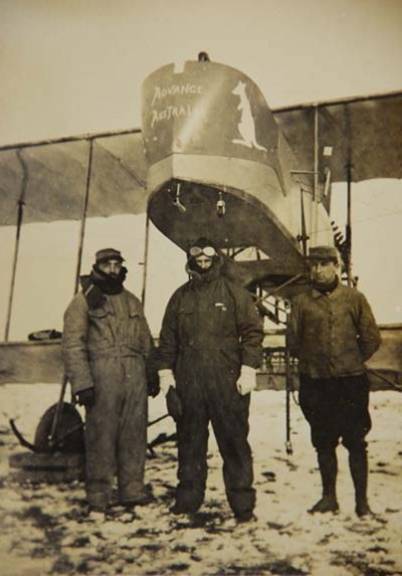
Above: In Winter kit .

''ADVANCE AUSTRALIA"—CAPTAIN OSWALD WATT THE SYDNEY AVIATOR IN FRANCE. (1916, June 3). The Mirror of Australia (Sydney, NSW : 1915 - 1917), p. 9. Retrieved from http://nla.gov.au/nla.news-article104645816
In 1916 he transferred to the newly formed Australian Flying Corps, with the rank of captain and command of B Flight, No.1 Squadron, then stationed in Egypt. In September he was promoted major and took command of No.2 Squadron which was being formed in Egypt. The new squadron was sent to England (Tetbury) for training in early 1917 and arrived on the Western Front in September. He kept three Australian squadrons in France throughout the war to end all wars.
Charles Bean on visiting No.2 Squadron after the battle of Cambrai, where Watt became famous for leading his squadrons on daring low level strafing attacks, recorded his impressions of its work: "They are winning themselves a magnificent name, this first Australian fighting squadron … It is Watt who has worked them up to this remarkably high level of conduct and general tone".
As the squadron commander Watt worked long hours, rising at 5 a.m. to give moral support to his dawn patrols; according to Bean, the heavy fighting at Cambrai had left Watt "very wan…he fell asleep after dinner". In February 1918 Watt—by then a lieutenant-colonel—was promoted to command the four squadrons (Nos. 5, 6, 7 and 8) of the Australian training wing at Tetbury, Gloucestershire, England. He excelled as a leader who inspired his crews with his ideals of service.
The novelist W. J. Locke visited him after the Armistice and noted "there was not one who … did not confide to me his pride in serving under a leader so distinguished'. A pilot later opined that as well as having "courage, determination, and an immense capacity for work", Watt possessed "the greatest factor in leadership, a genius for endearing himself (without conscious effort) to all who served under him".
At the end of the war Colonel Watt was presented by those who served under him with a magnificent miniature aeroplane in silver, a trophy of which he was very proud. In January 1919 Mr Watt was appointed O.B.E. He brought his wing back to Australia in the Kaisar-i-Hind (‘Empress of India’; a P&O liner requisitioned as a troopship which Lawrence of Arabia also sailed home in: http://www.ssmaritime.com/Kaiser-I-Hind.htm). Watt and his fellow airmen arrived home in June, 1919.
On his return he was elected president of the New South Wales section of the Australian Aero Club. After the war he lobbied politicians for improved safety measures in civil aviation and was well known for his generosity to former A.F.C. comrades and his efforts to find them employment. In 1920 he was offered the position of controller of civil aviation, but declined because of business commitments: he was a partner in Gilchrist, Watt & Sanderson Ltd, the family shipping firm, and a director of the Australian Alum Co., the Great Britain Tin Mining Co., the Sogeri Para Rubber Co. and Art in Australia Ltd.
'Toby' Watt drowned at Bilgola Beach, one of his favourite refuges, on 21 May 1921. He was only 42 years old. This Obituary in the Sydney Morning Herald gives a great overview of his life:
COLONEL WATT.
DROWNED NEAR NEWPORT
SPLENDID WAR RECORD.
Colonel Walter Oswald Watt, late of the Australian Flying Corps, and a director of the firm of Messrs. Gilchrist, Watt, and Sanderson, Ltd., was found drowned at Bilgola Beach, about a mile north of Newport, on Saturday morning.
Colonel Watt was staying at his week-end residence there, and went down to the beach alone, evidently for the purpose of collecting wood. He had taken off his bath robe, which he was wearing over his bathing costume, and this, together with his towel, was found on the beach. A number of sticks were piled in a heap close by. These were close to a point where a number of slippery rocks run down to the water's edge, and not at the place where Colonel Watt usually entered the water when swimming.
When the body was examined on Saturday afternoon a bruise was found at the back of the head and a cut in the middle of the forehead. There were also some scratches on one cheek, and these signs suggested that Colonel Watt slipped on the rocks referred to, and fell, striking his head. It is believed that the fall stunned him, and that he was drowned in comparatively shallow water, into which he rolled after the fall.
Mr. Sydney Jones, a caretaker at Colonel Watt's residence, was the first to notice the body floating in the water. He hurried to Newport to obtain assistance. From there some fishermen proceeded in a boat, and re-covered the body. Constable Grant, of Mona Vale, and Mr. Bulfin made strenuous efforts to restore animation, but it was realised from the beginning that there was no hope of success, and after half an hour's work they had to admit failure. Dr. Richards, of Narrabeen, pronounced life extinct.
Colonel Walter Oswald Watt, O.B.E., was the youngest son of the late Mr. John Brown Watt, M.L.C., who came to Australia in 1842, and who, in 1851, founded the shipping firm of Messrs. Gilchrist, Watt, and Company. Colonel Watt was born at Bournemouth, England, on February 11, 1878. His early schooling was interfered with seriously by illness and by a burning accldent which he met with in 1890. In 1899, however, he obtained a third class in the Natural Science Tripos at Cam-bridge. He left Trinity College in the same year, and came to Sydney early in 1900. Two years later he married Miss Muriel Williams, daughter of Mr. Justice Williams, of Victoria. He left a son, aged 15 years, who is now at Wellington College, England.
It was in aviation that Colonel Watt achieved his greatest distinction. He was, in fact, one of the first in Australia to take it up seriously. He started flying at Salisbury in 1911, and gained his pilot's certificate there. The Royal Aero Club's certificate was issued to him on July 5, 1911, and it was the first certificate of its kind to be issued to any Australian.
After gaining his certificate Colonel Watt returned to Australia, but did not engage further in flying until the winter of 1913-14, when he went to Egypt, and while there bought a Bleriot monoplane. While in Egypt he made the acquaintance of most of the noted French airmen of the day, including Messrs. Bleriot, Vedrines, Conneau, Garros, Louis Noel, Guillaux, and others, most of whom later on did excellent work in the Great War.
Colonel Watt was at this time anxious to become thoroughly proficient in the art of flying, which was still practically in its infancy. He therefore proceeded to France, and entered Bleriot's factory on a six months' apprenticeship. Before he was able to complete this period the war suddenly broke out, and threw Europe into a fever of excitement. France declared war on August 2— two days before Great Britain—and on the same day Colonel Watt offered his services to the French Government, expressing his willingness to serve in any capacity. At the same time he handed over his monoplane to the French Government as a free gift.
His services were readily accepted by the French Government. This was regarded as a great compliment and an excellent testimony to the value of his services as an aviator, as at that time there were only seven foreigners who were allowed to serve with the French army. He was one of the most popular pilots in the French army, and, for the first 18 months of the war, he flew regularly every second day, and met with the greatest possible success.
An indication of the courage with which he tackled his task was given by the fact that on one occasion, after securing information of the utmost importance to the French army, his aeroplane was hit no fewer than 36 times, and he succeeded in getting back to the French lines. The deed for which the late Colonel Watt gained the Legion of Honour was a particularly striking one. He had been forced to land midway between the French and German lines. He and his observer immediately came under a heavy fire from the enemy's trenches, and, after disentangling themselves from their machine, had to run a distance of 300 yards, still under the enemy's fire. They succeeded in reaching the French lines safely, and the information which they brought back proved to be of the greatest possible value. Some little time afterwards the late Colonel Watt was awarded the Croix de Guerre, to which were subsequently added three of the highly-coveted palm leaves. These were personally presented to Colonel Watt by General Joffre.
In the French Army Colonel Watt remained a poilu, but enjoyed the titular rank of "captain," his pay, however, being ½d per day. This was due to the fact that he was not a naturalised French subject, which was a necessary condition if he desired to take command of a French squadron. The French Government realised that an officer of Colonel Watt's calibre was being wasted in the inferior rank which he was compelled to hold. They therefore suggested that he should join the Australian Flying Service, which had just been formed. Colonel Watt followed this ad-vice, and was sent to Egypt with the rank of major. After being second in command for some time, he took the No. 2 Squadron to England. On September 21, 1917, he flew his squadron of 24 machines across the Channel to France, and arrived without a mishap. The type of machine used by this squadron was the D.H.5.
The record of Colonel Watt's squadron during the following nine months in France was one which has seldom, if ever, been excelled. They were a happy family. Many of the pilots were killed, but the squadron gained a large number of D.S.Os., Military Crosses, and other decorations.
In 1917 Colonel Watt was appointed to command the new training wing at Tetbury, Gloucestershire. He hoped to take the wing to France, but in this he was disappointed.
He was able, however, to keep the three Australian squadrons in France well supplied with brilliant pilots. The wing at Tetbury was the last word in efficiency, and only those who visited the headquarters of the two aero- dromes which comprised the wing could realise the remarkable spirit which prevailed. At the end of the war Colonel Watt was presented by those who served under him with a magnificent miniature aeroplane in silver, a trophy of which he was very proud. He brought his wing back to Australia in the Kaisar-i-Hind, which arrived here in June, 1919, Colonel Watt being officer in charge of the troopship. Since resigning his command, Colonel Watt's interest in those who served with him remained unabated, and he was constantly endeavouring to aid those who had served with him and to see that they were given a fair start in civil life. Last year he was offered the position of Controller of Civil Aviation, but was compelled to decline it owing to business calls. He was also invited to stand for Parliament, but again declined.
The late Colonel Watt was president of the Australian Aero Club, and vice-president of the United Service Institution. He was also a partner in the firm of Messrs. Gilchrist, Watt, and Co., and a director of Messrs. Gilchrist, Watt, and Sanderson. Ltd., the Australian Alum Company, the Sogeri Para Rubber Company, and several other commercial enterprises.
Colonel Watt was a brother of the late Mr. William Holden Watt, who died in 1909, and of Mr. Ernest Watt, of Elizabeth Bay-road. His three sisters are Mrs. William Caldwell, of Scotland, Mrs. Gordon Caldwell, of Sur-rey, and Mrs. Bethune, of Scotland.
Mr. E. J. Hart, hon. secretary of the Australian Aero Club, has been asked to make arrangements for a military funeral. He stated last night that permission had been obtained for uniform to be worn. The funeral will take place af St. Jude's churchyard, Randwick, at 4 p.m. to-day. Members and ex-members of the Australian Flying Corps Royal Air Force, and Australian Aero Club will form a guard of honour. They will as- semble at the churchyard at 3.30 p.m., and re port to a senior officer. COLONEL WATT. (1921, May 23). The Sydney Morning Herald (NSW : 1842 - 1954), p. 8. Retrieved from http://nla.gov.au/nla.news-article15950786
Death of Colonel Watt — Empire Sunday in Sydney
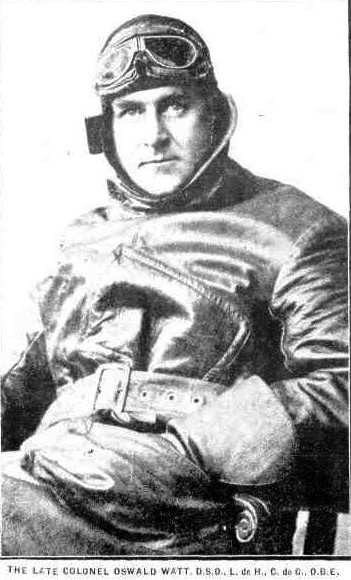 Right: The LATE COLONEL OSWALD WATT, D.S.O., L. de H., C. de G., O.B.E.
Right: The LATE COLONEL OSWALD WATT, D.S.O., L. de H., C. de G., O.B.E.
COLONEL . OSWALD WALTER WATT, who served throughout the war, and had a most distinguished aerial record, was drowned at Bilgola Beach, near Newport, on Saturday morning. The news ''created general regret, for he was exceedingly popular, especially among the men who had served with him in France and Egypt.
Colonel Watt was staying at his week-end residence at Bilgola, the only other occupant of the house being the caretaker. He was accustomed to have a swim every morning, and on this occasion he went off to the beach as usual with his towel on his arm and his dressing-gown covering his bathing
suit. It is believed that he was engaged in collecting wood brought in by the tide, and that, slipping on the rocks, he was stunned, and fell into the water. The caretaker, noticing the body floating, hurried to Newport for assistance, and some fishermen, who went out in a boat, recovered the body. Colonel Watt was a director of the firm of Messrs. Gilchrist, Watt, and Sanderson, Ltd., which was founded in 1851 by his father, the late Mr. John Brown Watt, M.L.C.
He was born at Bournemouth, England, in 1878, and after a successful scholastic career at Cambridge University came to Sydney in 1900. Two years later he married Miss Muriel Williams, daughter of Mr. Justice Williams, of Victoria. He left a son, aged 15 years, who is now at Wellington College, England.
His magnificent work in the war is well known. First, he served as an aviator with the French army, and was awarded both the Legion of Honour and the Croix de Guerre. Subsequently he joined the Australian Flying Service in Egypt as major, and soon afterwards took the No. 2 Squadron to England, flying his squadron of24 machines across the Channel to France. The record of that squadron was a magnificent one.
In 1917 Colonel Watt was appointed to command the new training wing at Tetbury, Gloucestershire. He returned to Australia in June, 1919, in charge of the troopship Kaiser-i-Hind. The funeral took place on Monday with military honours.
COLONEL WATT'S WEEK-END RESIDENCE AT BILGOLA BEACH. (below)
The Colonel is believed to have slipped, on the rocks a the right, and to have been stunned by the fall. His body was found some little distance out.
Death of Colonel Watt —Empire Sunday in Sydney. (1921, May 25). Sydney Mail (NSW : 1912 - 1938), p. 15. Retrieved from http://nla.gov.au/nla.news-article159038798
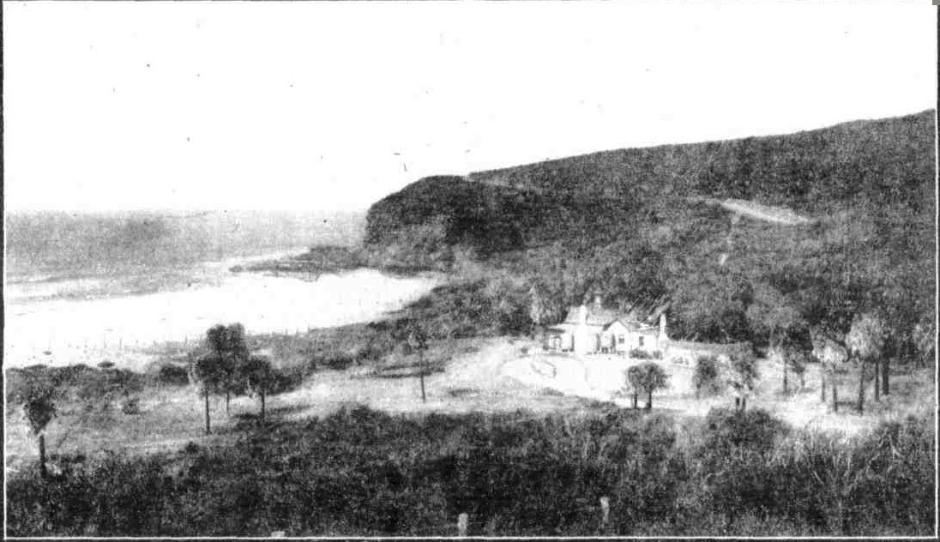
COLONEL WATT'S WEEK-END RESIDENCE AT BILGOLA BEACH. The Colonel is believed to have slipped, on the rocks at the right, and to have been stunned by the fall. His body was found some little distance out. Death of Colonel Watt —Empire Sunday in Sydney. (1921, May 25). Sydney Mail (NSW : 1912 - 1938), p. 15. Retrieved from http://nla.gov.au/nla.news-article159038798
Walter Oswald Watt was buried with full military honours. Members of the AFC, Royal Air Force, and Australian Aero Club formed a guard of honour at the service, one of the largest in Randwick's history, which also included representatives of the Royal Australian Navy and Australian Army. Among the tributes was a floral wreath from an anonymous group of French admirers, and another that was dropped by parachute from a low-flying plane. His ashes were interred in the family vault at St Jude's churchyard, Randwick; the epitaph on his gravestone reads; "A great man and a great soldier"
LATE COLONEL WATT.
GREAT PUBLIC TRIBUTE. NAVAL' MILITARY, AND PUBLIC MOURNERS.
St. Jude's Church of England, Randwick, was thronged yesterday afternoon, when the service preparatory to the burial of the late Colonel Walter Oswald Watt, O.B.E., Croix de Guerre, and Legion of Honor, was held.
The service was conducted by Rev. W. J. Cake-bread, assisted by Rev. Frank Cash. The chancel was strewn with wreaths. Brigadier-General Jobson, who gave a brief eulogistic address, said that they had assembled to do honor to the memory of a great man, who had rendered good service in the great war. For France he had performed signal service, and of that service France had shown her appreciation. No soldier, flying man, or "Digger" had ever gone to Colonel Watt appealing for help without receiving it. He not only: gave willingly, but he gave with a blessing. During the progress or tho service an aeroplane hovered overhead, and a wreath, with a parachute attachment, was dropped in Avoca Street, close to the church. There were two cards attached. One bore the' inscription, "Australian Aircraft and Engineering Company, Limited. Sydney," and the other contained the request, "Would finder kindly deliver to St. Jude's Churchyard, Randwick" The wreath was brought into church before the service was concluded.
While the coffin was being borne by eight members of the late colonel's squadron to the gun carriage (provided by the base coromanddant), the organist (Mr. Arnold Mote) played Chopin's Funeral March. The firing party, which was drawn from the flagship Melbourne and the Brisbane, and which was under the command of Lieutenant Collins, came to the salute as the coffin approached the gun carriage. A procession was formed, and the family vault In St. Jude's Cemetery was reached after the funeral party had walked round two sides of a square, entering the burial ground by the northern side! It is long since so many people assembled round a graveside at St. Jude's. The funeral was one of the largest held In the metropolitan area for some time. The remains were interred with full naval and military honors, and the general public added their tribute in recognition of the worth of the man who had done so much for the Empire, and who in time of peace had met his death under tragic circumstances.
The chief mourners were Mr. Ernest Watt (brother) and Mrs. Watt, and Miss Pauline Watt. The navy and army representatives were many, and the men who had served with Colonel Watt turned out In numbers that, amply bespoke their affection for their late chief. The commercial and shipping interests were largely represented, and the general public gave an outward manifestation of regret at the untimely end of a man who had done so much for tho defence of their liberty and freedom.
Among the naval officers were Flag-Captain Cumberlege, Commander Feakes, and Lieut.-Commander Burrough, of the flagship Melbourne; and officers from all the warships in harbor. The band of the Melbourne played appropriate music on the march from tho church to the grave.
The State Commandant was represented by Colonel Thornthwaite. Other military officers included Major-General Sir Charles Rosenthal, K.C.B., - C.M.G., D.S.O., Brigadier-General M'Glinn, C.M.G., C.B.E., Colonel J, Adam Dick, C.M.G., Colonel Arnott, Colonel ' F. Osborne, Colonel Eames, Lieutenant-Colonel Travers, Colonel Wall, Colonel Rabett, Colonel Rutledge, M.L.A., Colonel Pearce (representing Colonel Farr, of the Repatriation Department), Lieutenant-Colonel Jamieson, Major Bond, Major Ross, Captain Robertson, and Lieutenant Arnott.
The air forces represented were the R.F.C., A:F.C„ and the Australian Aero' Club. The airmen were represented, among others, by Colonel Reynolds, Major Blake, Captains Hoidca, Mailey, Robertson, Lieutenants E. Walker, G. Walker, Cook, Cowell, Curley, Marduel, Wheeler, Marshall, Mulroney, Wade, Dibbs. Warneford, and First Air Mechanic A. Strange-Mure.
The directors and staffs of Gilchrist,' Watt, art! Co., and Gilchrist, Sanderson, and Co. wetp well represented. The Royal Automobile Club was also represented.
The Imperial Service ' Club (of which deceased was a vice-president) was represented by Commander R. S. Lambton (president) and Colonel Rabctt (vice-president).
The civilian representatives Included Mr. John Gilchrist, Sir Thomas Hughes, M.L.C., Monslgnor King, O.B.E., Rev. Father Murphy, M.B.E., Mrs. Walter Watt, Mr. and Mrs. James Burns, Captain C. M. Young,. Dr. and Mrs. Jamieson, Mr. S. Richardson, Dr. Brady, Dr. Reddail, Mr. D. Mills, Commander A. G. Milson, Messrs. J. W. Scott Fell, B- A. Oslear, Alex. Hay, M.H.R., Q. L. Deloitte, J. O. Fairfax, Robert D. W. Towns (secretary to Gilchrist, Watt, and Co.), Oswald L. M'CIoy, (shipping malinger to GUchriet,"Watt, and Co.), G. M. Merlvale, B. Burdekln, T. Cornish P. A. I Rabett (Union Club), W. A. Tnlnsh (secretary) and staff of the Union Club, W. H. Rothe, W. P. Fraser (representing Harrison, Jones, and Devlin), Victor Cohen, Roy Allen, Edward J. I Hart (honorary secretary of the New South Wales section of the Australian Aero Club), M. Severn, W. H. Palmer, H. Jefferson, E. J. Bayly Macarthur. Gordon Wescho, F. H. Williams, H. Peters, G. W. Lawson (treasurer of the Aero Club), W. Barnes, H. Villar, H. W. Corric (director of. the Commonwealth and Dominion Steamship Line), Reginald Allen, Arthur Wigram Allen, Sydney J. Clarence, Douglas L. Dowdell, Joseph Playoust (president de l'Union Francaiso), R. H. Laws (representing H. S. Blrt and Co., Ltd.), J. W. Cocks, E. S. Dunhill, Neville Dangar, R. R. Moss, R. Fowler, W. Olliffe, H. Dean, C. Carter, E. J. Knox and. Miss Knox, Captain James Peter (representing Mr. P. J. Franki), Captain' Arkley Smith (acting secretary. Royal Shipwreck Relief Society), Captain J. Owen, Messrs. R. V. Saddington (representing the Australian Alum Company), A. Carroll, J. Guthrie, F. P. ' M'Cabe, A. J. : Simpson, Eric G. Simpson, G.' Hewison, W. B. Clarke (Liverpool and London and Globe Insurance) Company), G. S. Freoman, H. T. Hall, G. H. Mather, J. B. Milne, Charles R. Carrlek , (assistant-manager, Central Wharf Stevedoring Company), Copeland Lethbridge (manager, Perpetual Trustee Company). '
The service at the graveside was conducted by Revs. W. J. Cakebroad and Frank Cash, after which the firing party discharged throe volleys over the grave. The sounding of the naval 'form of "The Last Post" by two trumpeters closed the service.
Many wreaths were sent, chief among them being from: — Laurel from Bertha, Tim and Bertha, Jimmy (son, England), Mr. and Mrs. Ernest Watt, Felicity and Jimmy, Pauline, Pamela, Mrs. Margaret Caldwell (England), Mrs. Gordon Caldwell (England), Mrs. Bethune (England) (sisters), nieces in England, Eileen Watt, his old nurse (Ward), Mr. Harry Caldwell . (nephew), Mrs. P. C. Watt and family, Helen Watt, Dr. and Mrs. Marsh, Mr. and Mrs. Charles Weston, Mr. and Mrs. Hubert Flood, Mr. and Mrs. M'Pherson (Hobart), Dr. and Mrs. Brady, Major Gordon Brady, Gil-I clirist. Watt, and Sanderson, Ltd., staff Gilchrist, Watt, and Sanderson, Ltd., Gilchrist, Watt, and. Co., Wills, Gilchrist, and Sanderson, Ltd. (Brisbane), John Sanderson and Co. (Melbourne), George Wills and Co., Ltd. (Adelaide), S. J. Clarence, Mr. and Mrs. Frank Chase, Mr. and Mrs. Richard Chase, Mr. and Mrs. A. H. W. Cunningham. Dr. and Mrs. E. W. Fairfax, Misses Knox, Miss Jane Brenan, Mrs. Alfred Lamb and Mrs. Tom Lamb, Captain Tooth, Mr. and Mrs. J. Burns, Mrs. Walmlngton, Mr ond Mrs. Murray Campbell, the Australian Aero Club (N.S.W. section), the publishers, editor, and staff of "Aircraft," commodore command-jing, enptains and officers H.M.A. fleet, Australian. Aircraft and Engineering Co., the French Consul, Mrs. Bloodworth and Miss Borthwlck. directors, Australian Alum Co., Ltd., Dr. and, Mrs. George Watt, Mr. D. M. Cohen, Mr. and Mrs. .E. L. Robinson, Sydney Ure Smith and Bertram Stevens, Jenn and Co., Mr. and Mrs. Cyril Williams, directors and staff of Aerial Co., Ltd., Mr. John Gilchrist and family, Monty and George Walker, secretary of staff of the Union Club, Mr. and Mrs, Tom Donkin, Mr. and Mrs. John Daliey, Miss Barbara Bowker, Misses Mary and Helen Laidley, Mr. S. J. Clarence, Mi. W. . T. Craig, Gordon, and, Molra, Mr. and Mrs. Cunningham, Gilchrist, Watt, and Co., Imperial Service Club, Dr. and Mrs. H. Marks, president and members of tile Union Club, Mr. and Mrs. H. Wj Corry, Mr. and Mrs. J. A. D. Gibson, Dr. and Mrs. Sydney Jamieson, Mr. C. H. Chateau,' Mr. and Mrs. Fraser. Miss Edith Weston, directors, Ulladulla Silica and Fire Bricks, Ltd., Mr. C. M. Young, General Jobson, Misses Phyllis and Ruth Macarthur, Miss Margaret Tooth, Commander and Mrs. Feakes, Sir Henry Brad-don, Lieutenant W. J. Warneford. Mr. W. G., Blaxland, Mr. J. H. Gossn, Mr. C. P. Clarson, Mr. and Mrs. Barden.) Colonel and Mr R. Macarthur Onslow, Mr. Hugh D. M'lntosh, M.L.C., Mr. and Mrs. Neville Dangar, Misses Blanche and Mildred Bloomfield, Wilkinson and Lavender, Limited, Tho Camp (Bilgola), Dalgety and Co.. Limited, T. J. Parker, Mr. and Mrs. Ralph Gibbs, Phyllis and John Massle, A.M.L. and F. Company, Limited, Mrs. Edward Knox, Miss Kenham, Misses Barbara and Janet Knox, Coe, Mr. and Mr B: Frank Macdenaid, M. Freeman and A. White. Mrs. Nora Dangar, Bubbles and Patsy, Gooffery Forrest Hughes, Mr. and Mrs. John M'Keown. Mr. and Mrs. Arthur Wigram Allen, R. H. Dempster, directors and staff, Huddart, Parker, Limited, Grimes Motor Garage, Limited, Miss Eugenie Moreau, Returned Soldiers and Sailors' Imperial League, Sir Thomas and Lady Hughes, Mrs. J. W. Stewart, Mr. and Mrs. P. A. Rabett, Miss Allison Rabett, Mrs. G. N. Barker, Walter Allan (England), Herbert Allan (England), John Allan (England). Miss N. Brenan. FLAG AT SOLDIEKS CLUB. The flag at the Soldiers' Club was flown at half-mast yesterday In honor of the late Colonel Watt. LATE COLONEL WATT. (1921, May 24). The Daily Telegraph (Sydney, NSW : 1883 - 1930), p. 9. Retrieved from http://nla.gov.au/nla.news-article239743569
Arthur Wigram Allen married Ethel Lamb in 1891 and they went on to have four children: Ethel Joyce, born in 1893, Arthur Denis Wigram in 1894, Ellice Margaret in 1896 and Marcia Maria in 1905. Fascinated by the new inventions of the era, he became interested in photography, buying the latest cameras. It is their daughters that are seen, with friends, bathing at Bilgola in some of his photographs - as well as taking Dame Melba there.
.jpg?timestamp=1537475492208)
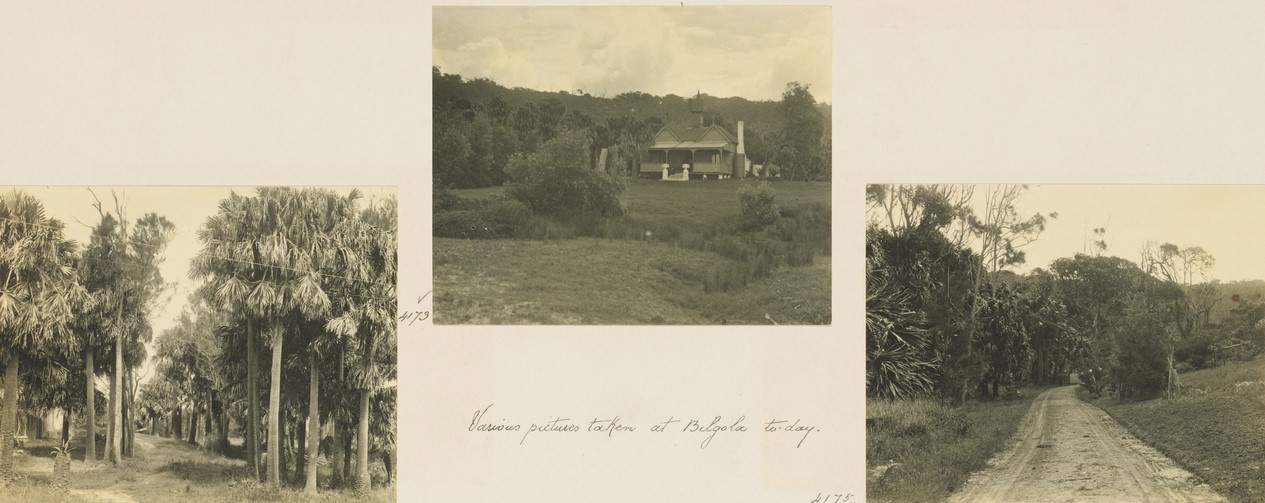
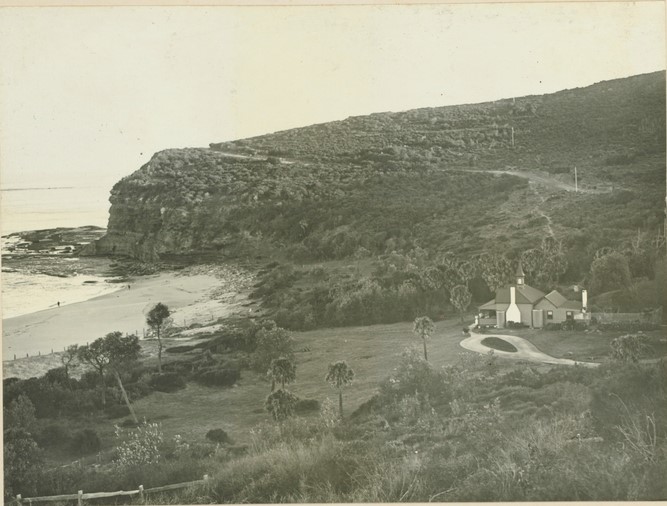
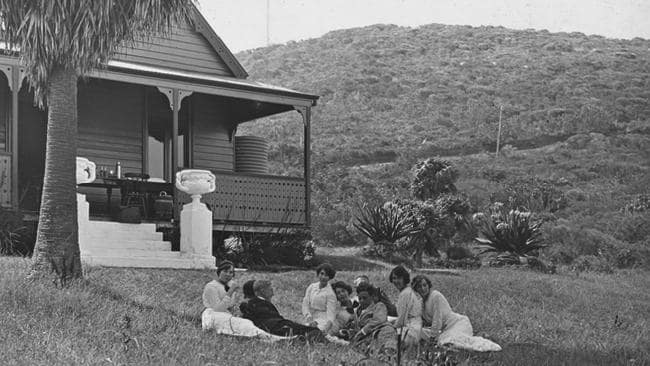
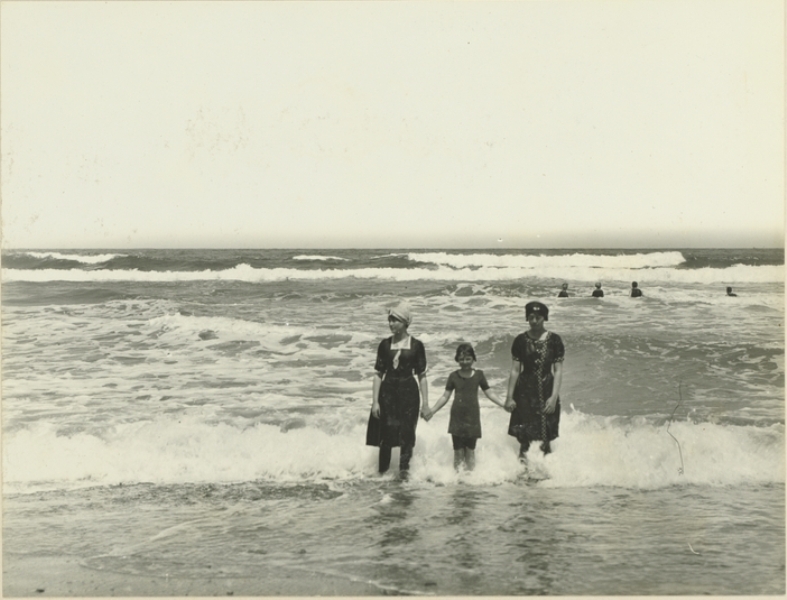
Members of the Allen Family surf bathing at Bilgola, Sunday 30th of November, 1913, Pic a3292030h courtesy State Library of NSW.
His estate was sworn for probate at £176,846. In his will Mr Watt left two bequests to the Australian Aero Club, one of which was used to establish the Oswald Watt Gold Medal for outstanding achievement in Australian aviation. He also bequeathed a sum to the Royal Military College, Duntroon. The award was founded as the Oswald Watt Prize later in 1921.
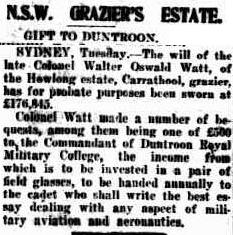
N.S.W. GRAZIERS ESTATE. (1921, October 12). Advocate(Burnie, Tas. : 1890 - 1954), p. 3. Retrieved from http://nla.gov.au/nla.news-article69311658
A large amount of the residue of Watt's estate went to the University of Sydney. Considered one of the university's great benefactors, he was commemorated by the Oswald Watt Fund. In May 1923, the Oswald Watt Wing of the Havilah Home for Orphans, Wahroonga, was opened by the Governor-General of Australia.
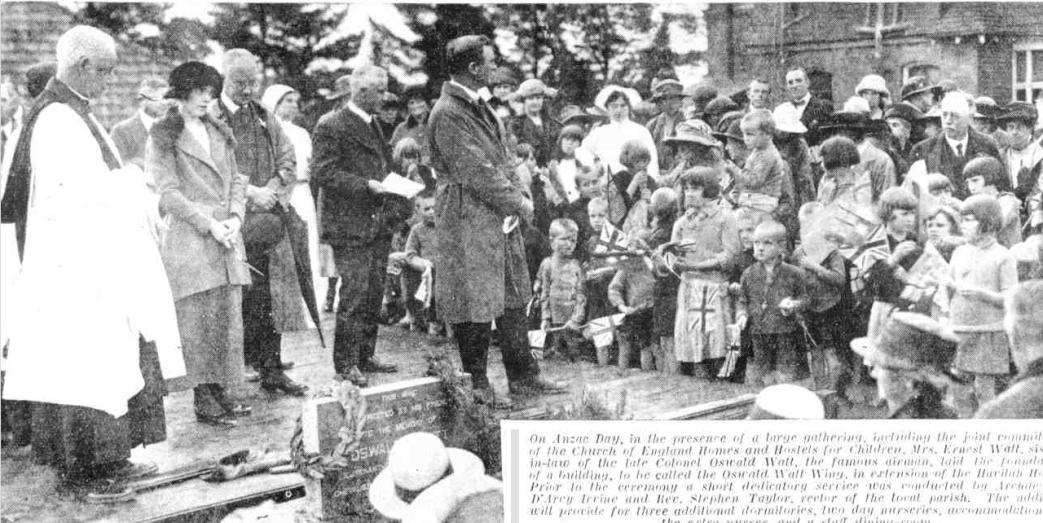
By December 1921 his cottage at Bilgola had been sold: Colonel Walter Oswald Watt. This property realised £4500 (The Sydney Morning Herald (NSW : 1842 - 1954) Saturday 10 December 1921 p 11 Article)
He was survived by his only son, then 15 year old James, who was in England being educated at the time of his death. This gent later married in the same church his parents had.
No title. The Argus (Melbourne, Vic. : 1848 - 1956) Wednesday 19 April 1933 p 5 Article Illustrated ... ON THEIR WAY TO THE WEDDING BREAKFAST. James Oswald, son of the late Colonel Walter Oswald Watt and of Lady Lawford; and Beverley Rand daughter of the late Mr. G. R. Jackson and of Mrs. Charles Cunningham, Egelabra, Toorak, photographed after their wedding at St. John's Church Toorak ... 71 words
 |
WalterOswaldWatt ResearchFile2012.pdf Size : 1533.98 Kb Type : pdf |
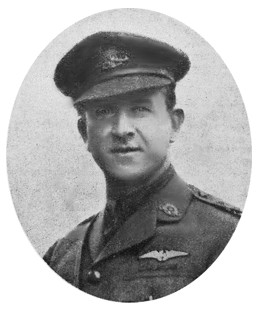
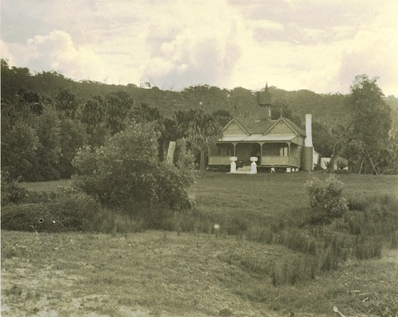
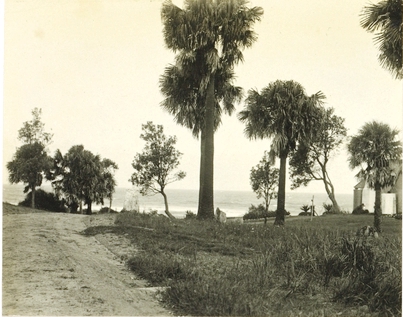
.jpg?timestamp=1336225266472)
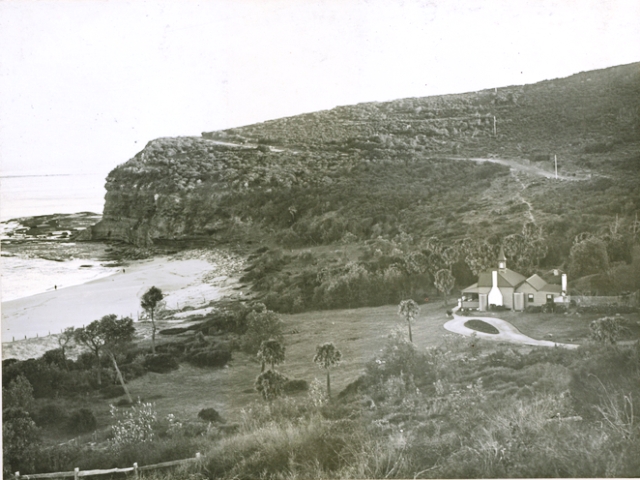
Above: Album 56: Photographs of the Allen family, 1 December - 30 April 1911 Image No. a3288035h and last is from Album 62: Photographs of the Allen family, 11 May 1913 - 15 October 1913, Image No. a3291037, all courtesy State Library of NSW
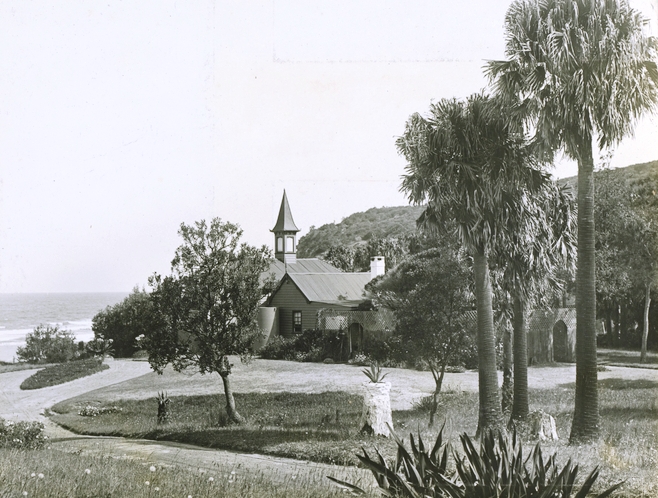
Above and Below from November, 30 1913 From album 63 of Allen family albums
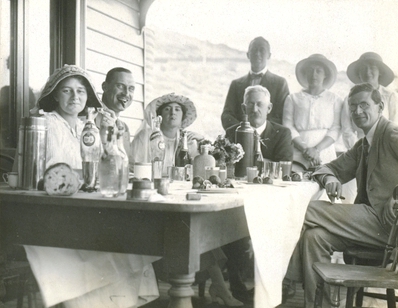
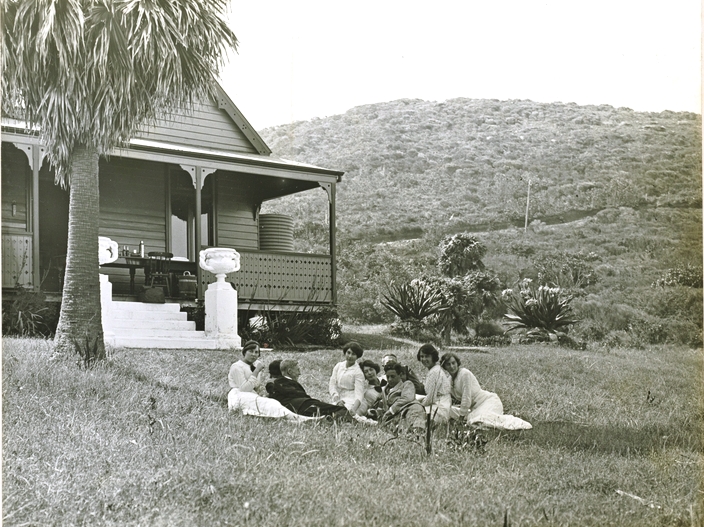
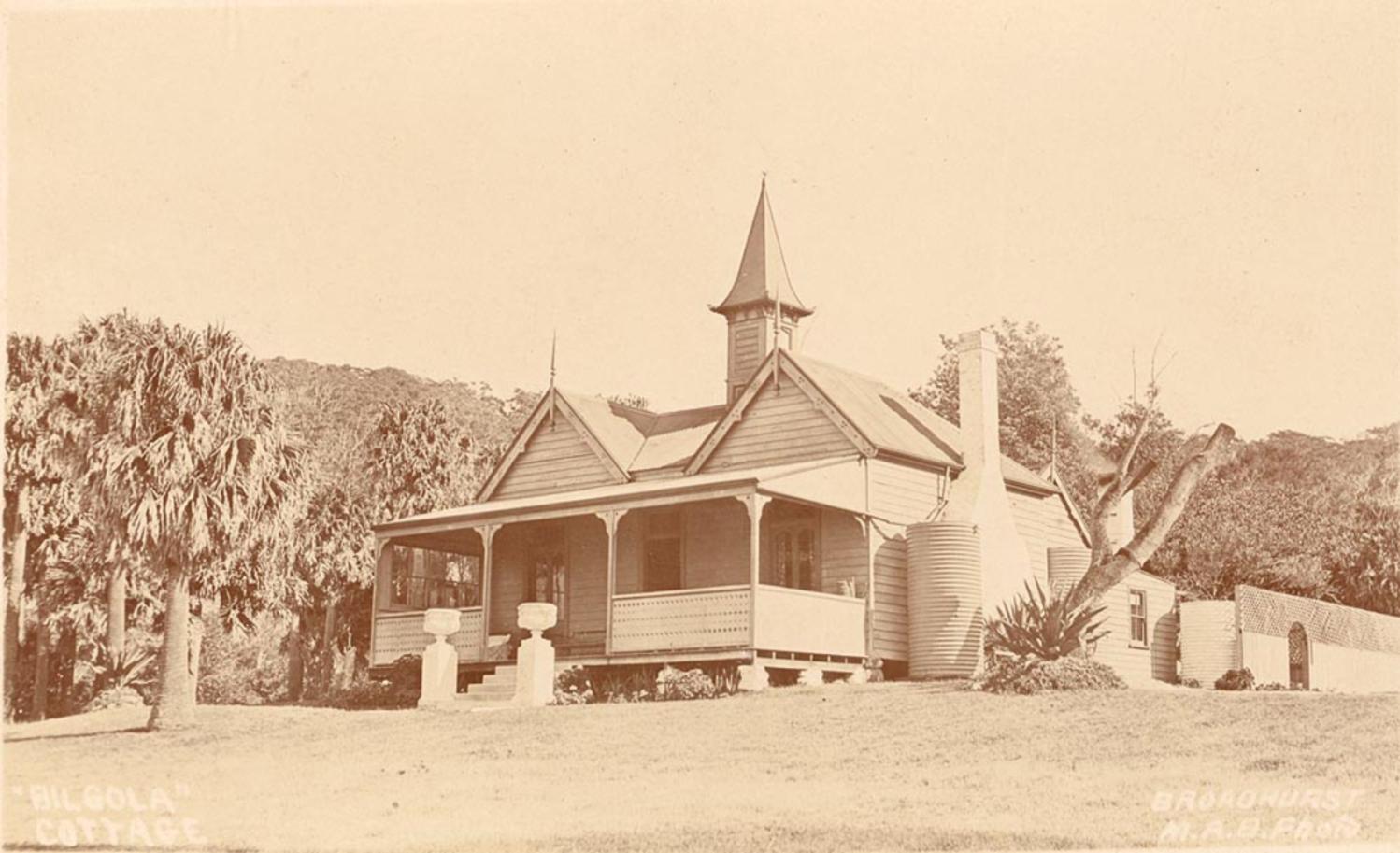

Item 07: Bilgola Headland, Newport, 1921 / Sydney Ure Smith, Bequeathed by Sir William Dixson, 1952: Below plate to right written in pencil: 'It was here that Colonel Oswald Watt met his death. Drawn from Col Watt's seaside residence 'Bilgola' when I was staying a weekend with him - a few months prior to his death'. '12-6' is written in pencil on back. Courtesy State Library of NSW.
Walter Oswald Watt threads collected and collated by A J Guesdon, 2012.